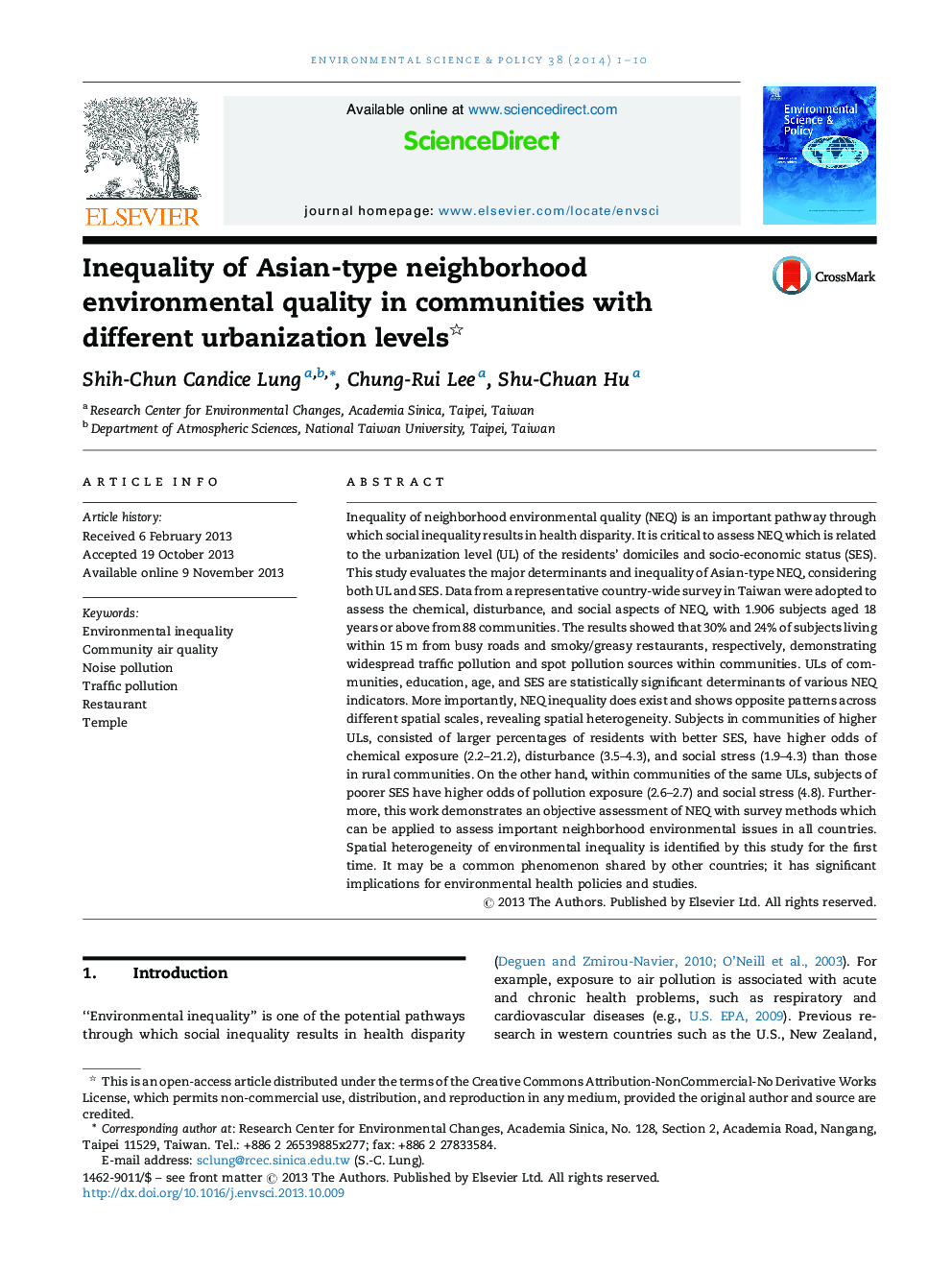| کد مقاله | کد نشریه | سال انتشار | مقاله انگلیسی | نسخه تمام متن |
|---|---|---|---|---|
| 7467900 | 1485068 | 2014 | 10 صفحه PDF | دانلود رایگان |
عنوان انگلیسی مقاله ISI
Inequality of Asian-type neighborhood environmental quality in communities with different urbanization levels
ترجمه فارسی عنوان
نابرابری کیفیت محیطی محله آسیایی در جوامع با سطوح مختلف شهرنشینی
دانلود مقاله + سفارش ترجمه
دانلود مقاله ISI انگلیسی
رایگان برای ایرانیان
کلمات کلیدی
نابرابری محیط زیست، کیفیت هوای جامعه، آلودگی صوتی، آلودگی ترافیکی، رستوران معبد،
موضوعات مرتبط
مهندسی و علوم پایه
مهندسی انرژی
انرژی های تجدید پذیر، توسعه پایدار و محیط زیست
چکیده انگلیسی
Inequality of neighborhood environmental quality (NEQ) is an important pathway through which social inequality results in health disparity. It is critical to assess NEQ which is related to the urbanization level (UL) of the residents' domiciles and socio-economic status (SES). This study evaluates the major determinants and inequality of Asian-type NEQ, considering both UL and SES. Data from a representative country-wide survey in Taiwan were adopted to assess the chemical, disturbance, and social aspects of NEQ, with 1.906 subjects aged 18 years or above from 88 communities. The results showed that 30% and 24% of subjects living within 15Â m from busy roads and smoky/greasy restaurants, respectively, demonstrating widespread traffic pollution and spot pollution sources within communities. ULs of communities, education, age, and SES are statistically significant determinants of various NEQ indicators. More importantly, NEQ inequality does exist and shows opposite patterns across different spatial scales, revealing spatial heterogeneity. Subjects in communities of higher ULs, consisted of larger percentages of residents with better SES, have higher odds of chemical exposure (2.2-21.2), disturbance (3.5-4.3), and social stress (1.9-4.3) than those in rural communities. On the other hand, within communities of the same ULs, subjects of poorer SES have higher odds of pollution exposure (2.6-2.7) and social stress (4.8). Furthermore, this work demonstrates an objective assessment of NEQ with survey methods which can be applied to assess important neighborhood environmental issues in all countries. Spatial heterogeneity of environmental inequality is identified by this study for the first time. It may be a common phenomenon shared by other countries; it has significant implications for environmental health policies and studies.
ناشر
Database: Elsevier - ScienceDirect (ساینس دایرکت)
Journal: Environmental Science & Policy - Volume 38, April 2014, Pages 1-10
Journal: Environmental Science & Policy - Volume 38, April 2014, Pages 1-10
نویسندگان
Shih-Chun Candice Lung, Chung-Rui Lee, Shu-Chuan Hu,
